1. Meaning of Accounting
CHAPTER 1
INTRODUCTION TO ACCOUNTING
MEANING OF ACCOUNTING
AMERICAN INSTITUTE OF CERTIFIED PUBLIC
ACCOUNTANTS
“Accounting is the art of recording, classifying and summarizing in a significant manner and in terms of money, transactions and events, which are in part at least, of a financial character, and interpreting the results thereof.”
Accounting is the process of recording financial transactions pertaining to a business. The accounting process includes summarizing, analyzing, and reporting these transactions to oversight agencies, regulators, and tax collection entities. The financial statements used in accounting are a concise summary of financial transactions over an accounting period, summarizing a company's operations, financial position, and cash flows.
NEED FOR ACCOUNTING
• In all activities and organizations (business or non-business) which require money and
other economic resources, accounting is required to account for these resources.
• In other words, wherever money is involved, accounting is required to account for it.
• Accounting is often called the language of business. The basic function of any language is
to serve as a means of communication. Accounting also serves this function.
Qualitative Characteristics of Accounting Information
Reliability
Reliability means the users must be able to depend on the information. The reliability of accounting information is determined by the degree of correspondence between what the information conveys about the transactions or events that have occurred, measured and displayed. A reliable information should be free from error and bias and faithfully represents what it is meant to represent.
Relevance
To be relevant, information must be available in time, must help in prediction and feedback, and must influence the decisions of users by : (a) helping them form prediction about the outcomes of past, present or future events; and/or (b) confirming or correcting their past evaluations.
Understandability
Understandability means decision-makers must interpret accounting information in the same sense as it is prepared and conveyed to them. The qualities that distinguish between good and bad communication in a message are fundamental to the understandability of the message. A message is said to be effectively communicated when it is interpreted by the receiver of the message in the same sense in which the sender has sent. Accountants should present the comparable information in the most intenlligible manner without sacrificing relevance and reliability.
Comparability
It is not sufficient that the financial information is relevant and reliable at a particular time, in a particular circumstance or for a particular reporting entity. But it is equally important that the users of the general-purpose financial reports are able to compare various aspects of an entity over different time period and with other entities. To be comparable, accounting reports must belong to a common period and use common unit of measurement and format of reporting.
1. Meaning of Accounting
- Books Name
- CA Shivali kedia Accountancy Book
- Publication
- CA Shivali kedia
- Course
- CBSE Class 11
- Subject
- Accountancy
Meaning of Accounting:
“Accounting may be defined as the process of recording, classifying, summarizing, analyzing and interpreting the financial transactions and communicating the results to the persons interested in this information”
Only Events related to Business which can be expressed in terms of Money are Economic Transactions and Economic Events.
1. Meaning of Accounting
- Books Name
- Vision classes Accountancy Book
- Publication
- Vision classes
- Course
- CBSE Class 11
- Subject
- Accountancy
Chapter 1:
Introduction to Accounting
MEANING OF ACCOUNTING
“Accounting is the art of recording, classifying and summarizing in a significant manner and in terms of money, transactions and events, which are in part at least, of a financial character, and interpreting the results thereof.”
Accounting is the process of recording financial transactions pertaining to a business. The accounting process includes summarizing, analyzing, and reporting these transactions to oversight agencies, regulators, and tax collection entities. The financial statements used in accounting are a concise summary of financial transactions over an accounting period, summarizing a company's operations, financial position, and cash flows.
NEED FOR ACCOUNTING
• In all activities and organizations (business or non-business) which require money and other economic resources, accounting is required to account for these resources.
• In other words, wherever money is involved, accounting is required to account for it.
• Accounting is often called the language of business. The basic function of any language is to serve as a means of communication. Accounting also serves this function.
2. Accounting as a source of information
ACCOUNTING AS ASOURCE OF INFORMATION
Accounting is a definite process of interlinked activities, that begins with the identification of transactions and ends with the preparation of financial statements.
Every step in the process of accounting generates information.
Generation of information is not an end in itself. It is a means to facilitate the dissemination of information among different user groups.
Such information enables the interested parties to take appropriate decisions. Therefore, dissemination of information is an essential function of accounting.
To be useful, the accounting information should ensure to:
• provide information for making economic decisions;
• serve the users who rely on financial statements as their principal source of information;
• provide information useful for predicting and evaluating the amount, timing and uncertainty of potential cash-flows;
• provide information for judging management’s ability to utilize resources effectively in meeting goals;
• provide factual and interpretative information by disclosing underlying assumptions on matters subject to interpretation, evaluation, prediction, or estimation; and
• provide information on activities affecting the society.
USERS OF ACCOUNTING INFORMATION
Owners: The owners provide funds or capital for the organization. They possess curiosity in knowing whether the business is being conducted on sound lines or not, and
whether the capital is being employed properly or not. Owners, being businessmen, always keep an eye on the returns from the investment. Comparing the accounts of various years helps in getting good pieces of information.
Management: The management of the business is greatly interested in knowing the position of the firm. The accounts are the basis, the management can study the merits and
demerits of the business activity. Thus, the management is interested in financial accounting to find whether the business carried on is profitable or not. The financial accounting is the “eyes and ears of management and facilitates in drawing future course of action, further
expansion etc.”
-
Creditors: Creditors are the persons who supply goods on credit, or bankers or lenders of money. It is usual that these groups are interested to know the financial soundness before granting credit. The progress and prosperity of the firm, two which credits are extended, are largely watched by creditors from the point of view of security
and further credit. Profit and Loss Account and Balance Sheet are nerve centers to know the soundness of the firm
-
Employees: Payment of bonus depends upon the size of profit earned by the firm. The more important point is that the workers expect regular income for the bread. The demand for wage rise, bonus, better working conditions etc. depend upon the profitability of the firm and in turn depends upon financial position. For these reasons, this group is interested in accounting.
Investors: The prospective investors, who want to invest their money in a firm, of
course wish to see the progress and prosperity of the firm, before investing their amount, by going through the financial statements of the firm. This is to safeguard the investment. For this, this group is eager to go through the accounting which enables them to know the safety of investment.
Government: Government keeps a close watch on the firms which yield good amount of profits. The state and central Governments are interested in the financial statements to know the earnings for the purpose of taxation. To compile national accounting is essential.
Consumers: These groups are interested in getting the goods at reduced price. Therefore, they wish to know the establishment of a proper accounting control, which in turn will reduce to cost of production, in turn less price to be paid by the consumers.
Researchers are also interested in accounting for interpretation.
Research Scholars: Accounting information, being a mirror of the financial performance
of a business organization, is of immense value to the research scholar who wants to make a study into the financial operations of a particular firm as such study needs detailed accounting information relating to purchases, sales, expenses, cost of materials used, current assets, current liabilities, fixed assets, long-term liabilities and share-holders funds
-
The accounting system concerned only with the financial state of affairs and financial
results of operations.
-
It is the original form of accounting. It is mainly concerned with the preparation of financial statements for the use of outsiders like creditors, debenture holders, investors and financial institutions.
These users can be divided into two broad categories: internal users and external users.
Internal users include: Chief Executive, Financial Officer, Vice President, Business Unit Managers, Plant Managers, Store Managers, Line Supervisors, etc.
External users include: present and potential Investors (shareholders), Creditors (Banks and other Financial Institutions, Debenture holders and other Lenders), Tax Authorities, Regulatory Agencies (Department of Company Affairs, Registrar of Companies, Securities Exchange Board of India, Labour Unions, Trade Associations, Stock Exchange and Customers, etc.
2. Accounting as a source of information
- Books Name
- CA Shivali kedia Accountancy Book
- Publication
- CA Shivali kedia
- Course
- CBSE Class 11
- Subject
- Accountancy
Accounting as Source of Information
Accounting provides a) relevant information to users of financial statements, so that they can be b) informed decisions (On the basis of the financial statements). It helps users analyze the risks and uncertainties and ways to mitigate (minimize) them.
Let us understand the qualitative characteristics of Accounting!
Reliability
Imagine in our cafe Harsh has had an accountant. But the accountant is not a good person the accounting information expenses sales his recording are not true there all fall at the end of the year Harsh will not people to rely on that data is not true hence the first characteristic qualitative characteristic of data is it should be reliable and true
Relevance
The data has to be relevant to the user of the financial statements because data helps in making the decisions in the future data is the basis of making the decisions about the business in the future.
In short, no one can rely on decisions made when the accounts are all wrong and unreliable,
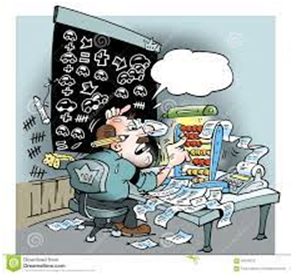
Understandability
In accountancy, we learn how to deal and interact with books of accounts and financial information. Sometimes there is no face-to-face communication between the accountant and the owner. At the end of the year, the accountant sometimes might just hand over the accounts to the owner.
Understandability explains refers to that the accounts should be prepared in such a way that even if there is no physical interaction the book of books of account should be self-explanatory to the person who is reading them understandability is very important for communication of financial information

Comparability
The accounting information should be comparable to the previous year’s information.
Sometimes the businesses compare their performance with the performance of similar companies in the industry.
Hence accounts should be prepared in such a way that they can be easily compared with in previous years and within our competitors as well
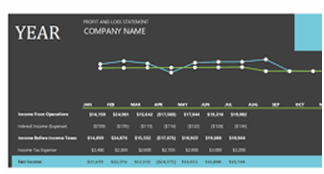
2. Accounting as a source of information
- Books Name
- Vision classes Accountancy Book
- Publication
- Vision classes
- Course
- CBSE Class 11
- Subject
- Accountancy
ACCOUNTING AS ASOURCE OF INFORMATION
Accounting is a definite process of interlinked activities that begins with the identification of transactions and ends with the preparation of financial statements.
Every step in the process of accounting generates information.
Generation of information is not an end in itself. It is a means to facilitate the dissemination of information among different user groups.
Such information enables the interested parties to take appropriate decisions. Therefore, dissemination of information is an essential function of accounting.
To be useful, the accounting information should ensure to:
• provide information for making economic decisions.
• serve the users who rely on financial statements as their principal source of information.
• provide information useful for predicting and evaluating the amount, timing and uncertainty of potential cash-flows.
• provide information for judging management’s ability to utilize resources effectively in meeting goals.
• provide factual and interpretative information by disclosing underlying assumptions on matters subject to interpretation, evaluation, prediction, or estimation.
• provide information on activities affecting the society.
3. Objectives of Accounting
OBJECTIVES OF ACCOUNTING
Objective of accounting may differ from business to business depending upon their specific requirements. However, the following are the general objectives of accounting.
• Keeping systematic record.
Accounting is used for the maintenance of a systematic record of all financial transactions in book of accounts. A proper and complete records of all business transactions are kept regularly. Moreover, the recorded information enables verifiability and acts as an evidence.
• Ascertain the results of the operation.
The owners of business are keen to have an idea about the net results of their business operations periodically, i.e. whether the business has earned profitsor incurred losses. Thus, another objective of accounting is to ascertain the profit earned or loss sustained by a business during an accounting period which can be easily workout with help of record of incomes and expenses relating to the business by preparing a profit or loss account for the period.
Profit represents excess of revenue (income), over expenses.
If the total revenue of a given period is Rs 6,00,000 and total expenses are Rs. 5,40,000 the profit will be equal to Rs. 60,000(Rs. 6,00,000 – Rs. 5,40,000).
If however, the total expenses exceed the total revenue, the difference reflects the loss.
• Ascertain the financial position of the business.
Accounting also aims at ascertaining the financial position of the business concern in the form of its assets and liabilities at the end of every accounting period. A proper record of resources owned by business organisation (Assets) and claims against such resources (Liabilities) facilitates the preparation of a statement known as balance sheet position statement.
• Portray the liquidity position.
Accounting liquidity measures the company’s debtor’s ability concerning their debt payments. The same is usually expressed in terms of the percentage of the current liabilities.
• To provide information to various parties.
The accounting information generated by the accounting process is communicated in the form of reports, statements, graphs and charts to the users who need it in different decision situations. As already stated, there are two main user groups, viz. internal users, mainly management, who needs timely information on cost of sales, profitability, etc. for planning, controlling and decision-making and external users who have limited authority, ability and resources to obtain the necessary information and have to rely on financial statements (Balance Sheet, Profit and Loss account).
• To facilitate rational decision – making.
Accounting records andfinancial statements provide financial information which help thebusiness in making rational decisions about the steps to be taken inrespect of various aspects of business.
• To satisfy the requirements of law
entities such as companies, societies, public trusts , are compulsorily required to maintain accounts as per the law governing their operations such as companies act, trust act, societies act etc. Maintenance of Accounts is also compulsory under sales tax act and income tax act.
3. Objectives of Accounting
- Books Name
- CA Shivali kedia Accountancy Book
- Publication
- CA Shivali kedia
- Course
- CBSE Class 11
- Subject
- Accountancy
Objectives of Accounting
The job of an accountant is to be able to maintain a systematic record of financial information namely journal ledger profitability and financial position
We have been introduced to the journal and ledger above in the definition of accounting
- The major objective of books of accounts accountancy is to calculate the profit earned or loss suffered in a given year. This is calculated by preparing a profit and loss account which you will learn in the course of this year
- Another important aspect of the objectives of accounting is to determine the financial position at the end of every year that is assets liabilities and capital at the end of the year.

Proper maintenance of books of accounts assists the management in planning and decision-making throughout the lifetime of the business
Note for students.
(As accounts students it is very important for us to understand the meaning of certain words.)
Quantitative
Quantitative data is something that is a number based which can be measured which can be counted.
For example how much salary does a CA make in a year?
Qualitative
Qualitative data relates to other than numbers characteristics.
For example, is the CA a girl or a boy
Is the CA hard working employee or a lazy one
3. Objectives of Accounting
- Books Name
- Vision classes Accountancy Book
- Publication
- Vision classes
- Course
- CBSE Class 11
- Subject
- Accountancy
OBJECTIVES OF ACCOUNTING
- Objective of accounting may differ from business to business depending upon their
- specific requirements. However, the following are the general objectives of accounting.
- Keeping systematic record.
- Ascertain the results of the operation.
- Ascertain the financial position of the business.
- Portray the liquidity position.
- To provide information to various parties.
- To facilitate rational decision – making.
- To satisfy the requirements of law
ACCOUNTING
- The object of accounting is to record, classify, summarize, analyze, and interpret the business transactions and ascertain financial results and to communicate to various parties.
- It has a wider scope.
- It is concerned with all levels of Management.
ADVANTAGES OF ACCOUNTING
- Replacement of memory
- Evidence court
- Assessment of taxation liability
- Comparative study
- Sale of business
- Assistance to the insolvent person
- Assistance to various parties
- Facilities in raising loans
- Information regarding financial position.
LIMITATIONS OF ACCOUNTING
- Records only monetary transactions.
- Unsuitable for forecasting.
- No realistic information
- Personal bias of the accountant affects the accounting statements .
- Incomplete information.
- Profit no real test of managerial performance .
- Historical in nature.
- Window dressing in balance sheet.
4. Role of Accounting
ROLE OF ACCOUNTING
For centuries, the role of accounting has been changing with the changes in economic development and increasing societal demands.
- It describes and analyses a mass of data of an enterprise through measurement, classification and summarization, and reduces those date into reports and statements, which show the financial condition and results of operations of that enterprise. Hence, it is regarded as a language of business.
- It also performs the service activity by providing quantitative financial information that helps the users in various ways.
- Accounting as an information system collects and communicates economic information about an enterprise to a wide variety of interested parties. However, accounting information relates to the past transactions and is quantitative and financial in nature, it does not provide qualitative and non-financial information. These limitations of accounting must be kept in view while making use of the accounting information.
MEANING AND DEFINITION OF BOOKKEEPING
- Definition: “The art keeping permanent record of business transactions is book keeping.”
- J. R. Batliboi: “book-keeping is an art of recording business dealings in a set of books”.
- R. N. Carter: “Book-keeping is the science and art of correctly recording in the books
of accounts, all those business transactions that results in transfer of money’s worth”.
FEATURES OF BOOK-KEEPING
- It is the process of recording business transactions.
- Monetary transactions are only recorded.
- Recording is made in given set of books of accounts.
- Record is prepared for a specific period but presented for future references.
- It is an art of recording business transactions scientifically.
DIFFERENCE B/W BOOK-KEEPING AND ACCOUNTING
BOOK-KEEPING
- The object of book-keeping is to prepare original books of accounts, trial balance and to maintain systematic record of financial results.
* It has a limited scope .
- Level of work is restricted to clerical work
ACCOUNTING
- The object of accounting is to record, classify, summarize, analyze, and interpret the business transactions and ascertain financial results and to communicate to various parties.
- It has a wider scope.
- It is concerned with all levels of Management.
ADVANTAGES OF ACCOUNTING
- Replacement of memory
- Evidence court
- Assessment of taxation liability
- Comparative study
- Sale of business
- Assistance to the insolvent person
- Assistance to various parties
- Facilities in raising loans
- Information regarding financial position.
LIMITATIONS OF ACCOUNTING
- Records only monetary transactions.
- Unsuitable for forecasting.
- No realistic information
- Personal bias of the accountant affects the accounting statements .
- Incomplete information.
- Profit no real test of managerial performance .
- Historical in nature.
- Window dressing in balance sheet.
4. Role of Accounting
- Books Name
- CA Shivali kedia Accountancy Book
- Publication
- CA Shivali kedia
- Course
- CBSE Class 11
- Subject
- Accountancy
Roles of Accounting
The keywords here are identifying measuring recording and communicating. Let us study this in a little bit of detail
1. Identifying relevant transactions
Depending on the size of the business and hundreds of transactions can take place in a single day. Not everything can be recorded in the books of account. For all these transactions the accountant has to identify those transactions which are related to the business which are monetary in nature and which will come in our books of accounts
Example: Suppose Harsh Buys a refrigerator for a home for Rs.50,000. Which is a Business Transaction.
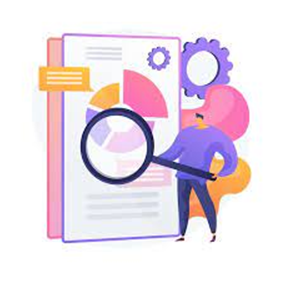
2. Measurement
Let us take a scenario where are trader trading in stationery items is selling the items within India and is also exporting some of his items to a dealer in China. What will be the common unit what will be the measuring unit will it be rupees will it be Paisa over let be a dollar a single unit common for all transactions has to be taken into account which is not to be changed every year.
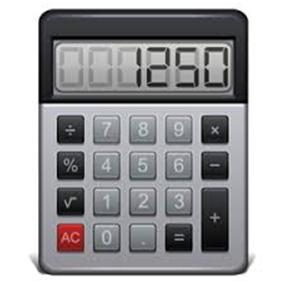
3. Recording

This is the basic (First) function of accounting for all business transactions all monetary (related to money) business transactions such as
Eg. sales purchases salaries and electricity are recorded or accounted in the books of account.
The recording is done in a book called journal which will study more in the coming chapters.
After the Accountant has recorded data the data has to be classified in a systematic manner,
similar accounts are grouped and placed in one place called a book called ledger this is the second step of recording
from journal we record the transactions all the transactions falling under the same head in an account called ledger which will study ahead in the coming chapters.
4. Communication
After the accounts has been recorded and measured analyzed the job of an accountant does it complete at this point.
Communication is concerned with transmitting the information to the end-users of financial statements so they can prepare to make decisions on the basis of books of accounts.

Why do the accountants need to communicate the results of the books of account or communicate the results of the books of accounts to the uses of financial statements who are these uses of financial statements let us understand?
There can be two kinds of uses of two financial statements. External users and internal users. People who are on the payroll (on salary) of the company are called internal uses to financial statements.

Internal users
If the company is growing, the employee’s growth is certain. The CEO the CFO vice president managers plant manager's there all internal to the organization and hence internal uses of the organization
External users
A business cannot function alone there are banks who give loans to the businesses there are creditors who give the gift credit to the businesses there is the government who keeps an eye if they are papering a taxes correctly or not the customer buys are products because he trusts us all these people are external to the organization they are dealing with the organization from the outside and external uses of financial information
Users Why do they need information?
Investors return on money invested in the business
Unions and employee groups Stability in Income, Bonus (Out of profits)
Lenders and Banks Credibility of the company
Creditor’s Continuous supply of products
Government and related Organisations Complaisance and payments of dues
Social Groups Impact on the environment
Other fields of accounting
Financial accounting refers to the preparation and interpretation of financial information and communication to the users of accounts. This is what we have understood above accounting is the basic sense
Management accounting refers to internal reporting to the management of the business. Management accountant is a very important component that helps the management make important decisions regarding the business operations
Cost accounting
Cost accountants are usually hired by companies that are dealing with manufacturing products. For any manufacturer cost of the product manufactured by him is the most important factor which decides his profits
All this tells you about the person or the data but not that they mention any quantity or numbers
Accounting has certain qualitative characteristics let us understand what qualitative characteristics are.
Accounting data should be recorded in such a way that it is very easy and understandable and useful to the person who uses that data.
For example, if I just randomly right 10 numbers it will not make any sense
But let’s say that these 10 numbers are the marks of the students in your class then it would make sense
4. Role of Accounting
- Books Name
- Vision classes Accountancy Book
- Publication
- Vision classes
- Course
- CBSE Class 11
- Subject
- Accountancy
ROLE OF ACCOUNTING
For centuries, the role of accounting has been changing with the changes in economic development and increasing societal demands.
It describes and analyses a mass of data of an enterprise through measurement, classification and summarization, and reduces those date into reports and statements, which show the financial condition and results of operations of that enterprise. Hence, it is regarded as a language of business.
It also performs the service activity by providing quantitative financial information that helps the users in various ways.
Accounting as an information system collects and communicates economic information about an enterprise to a wide variety of interested parties. However, accounting information relates to the past transactions and is quantitative and financial in nature, it does not provide qualitative and non-financial information. These limitations of accounting must be kept in view while making use of the accounting information.
USERS OF ACCOUNTING INFORMATION
Owners:
The owners provide funds or capital for the organization. They possess curiosity in knowing whether the business is being conducted on sound lines or not, and whether the capital is being employed properly or not. Owners, being businessmen, always keep an eye on the returns from the investment. Comparing the accounts of various years helps in getting good pieces of information.
Management:
The management of the business is greatly interested in knowing the position of the firm. The accounts are the basis, the management can study the merits and demerits of the business activity. Thus, the management is interested in financial accounting to find whether the business carried on is profitable or not. The financial accounting is the “eyes and ears of management and facilitates in drawing future course of action, further expansion etc.”
Creditors:
Creditors are the persons who supply goods on credit, or bankers or lenders of money. It is usual that these groups are interested to know the financial soundness before granting credit. The progress and prosperity of the firm, two which credits are extended, are largely watched by creditors from the point of view of security and further credit. Profit and Loss Account and Balance Sheet are nerve centers to know the soundness of the firm.
Employees:
Payment of bonus depends upon the size of profit earned by the firm. The more important point is that the workers expect regular income for the bread. The demand for wage rise, bonus, better working conditions etc. depend upon the profitability of the firm and in turn depends upon financial position. For these reasons, this group is interested in accounting.
Investors:
The prospective investors, who want to invest their money in a firm, of course wish to see the progress and prosperity of the firm, before investing their amount, by going through the financial statements of the firm. This is to safeguard the investment. For this, this group is eager to go through the accounting which enables them to know the safety of investment.
Government:
Government keeps a close watch on the firms which yield good amount of profits. The state and central Governments are interested in the financial statements to know the earnings for the purpose of taxation. To compile national accounting is essential.
Consumers:
These groups are interested in getting the goods at reduced price. Therefore, they wish to know the establishment of a proper accounting control, which in turn will reduce to cost of production, in turn less price to be paid by the consumers.
Researchers are also interested in accounting for interpretation.
Research Scholars:
Accounting information, being a mirror of the financial performance of a business organization, is of immense value to the research scholar who wants to make a study into the financial operations of a particular firm as such study needs detailed accounting information relating to purchases, sales, expenses, cost of materials used, current assets, current liabilities, fixed assets, long-term liabilities and share-holders funds.
- The accounting system concerned only with the financial state of affairs and financial results of operations.
- It is the original form of accounting. It is mainly concerned with the preparation of financial statements for the use of outsiders like creditors, debenture holders, investors and financial institutions.
MEANING AND DEFINITION OF BOOKKEEPING
Definition: “The art keeping permanent record of business transactions is book keeping.”
J. R. Batliboi: “book-keeping is an art of recording business dealings in a set of books”.
R. N. Carter: “Book-keeping is the science and art of correctly recording in the books of accounts, all those business transactions that results in transfer of money’s worth”.
FEATURES OF BOOK-KEEPING
- It is the process of recording business transactions.
- Monetary transactions are only recorded.
- Recording is made in given set of books of accounts.
- Record is prepared for a specific period but presented for future references.
- It is an art of recording business transactions scientifically.
DIFFERENCE B/W BOOK-KEEPING AND ACCOUNTING
BOOK-KEEPING
- The object of book-keeping is to prepare originalbooks of accounts, trial balance and to maintain systematic record of financial results.
- It has a limited scope.
- Level of work is restricted to clerical work
5. Basic terms in Accounting
BASIC TERMS USED IN ACCOUNTING
Entity
- An entity means an economic unit which performs economic activities e.g., Bajaj Auto,
- Maruti, TISCO.
Account
- It is a summarized record of
- relevant transactions at one place
- relating to a particular head. It records not only the amount of transactions
- but also reflect the direction of the account.
• ENTRY
- A transaction and event when recorded in the books of accounts is known as an Entry
• Transaction
- It is a financial happening entered into by two or more willing parties.
- It effects a change in the asset, liability, or net worth account.
- It is recorded first in journal and then posted into the ledger Examples of a transaction are sale of goods, purchases of goods, receipt from debtors, payment made to creditors,
- purchase or sale of fixed assets, payment of dividend, etc.
• Proprietor
- is the person who makes the investment and bears all the risks and rewards of the business
Debtor is
- a person or firm or company which owes amount to the enterprise on account of credit sale of goods or services.
- The amount due from him is a debt.
- The amount due from a person as per the books of the account is called a book debt.
• Drawings
- It is the amount of money or the value of goods which the proprietor or a partner takes for his domestic or personal use.
- Drawing reduces the investment (or capital) of the owners.
- It appears only in the accounts of sole proprietorship firms and partnership firms.
• Purchases
- The term purchases are used only for purchases of goods.
- Goods are those items which are purchased for resale or
- for manufacture of products which are also to be sold.
- It includes both cash and credit purchases
• Depreciation
- It is a fall in the value of an asset
- because of usage; or
- with passage of time; or
- obsolescence; or
- accident
• Purchases Return:
- Goods purchased may be returned due to any reason, say, they are not as per specifications or are defective.
- Goods returned are termed as Purchases Return or Returns Outward.
• Sale
- This term is used for the sale of goods dealt by the enterprise.
- The term ‘Sales’ includes both Cash and Credit Sales.
- When goods are sold for cash, they are cash sales
- When goods are sold and payment is to be received at a later date, they are credit sales.
• Sales Return or Returns Inwards
- It means Goods sold returned by the purchaser.
Discount
- A reduction in the price of goods is Discount.
Trade Discount
- It is a discount allowed to a customer on the basis of quantity of goods purchased.
Cash Discount
- It is a discount allowed to a customer for making prompt or timely payment.
• Capital
- It means the amount (in terms of money or assets having money value)
- Which the proprietor has invested in the business
- and can claim from it.
- It is a liability of the business towards the owner.
- It is so because of Business Entity Concept.
- Capital = Assets – Liabilities
• Gain
- It is a profit that arises from transactions which are incidental to business such as
- sale of investments or fixed assets
- at more than their book values.
- Gain may be operating gain or non-operating gain.
• Cost
- It is the amount of expenditure
- incurred on or
- attributable to
- a specified article, product or activity.
• Creditor is
- a person or firm or company to whom the enterprise owes amount on account of Credit purchase of goods or services.
• Assets:
- Assets are property or legal rights
- owned by an individual or business
- to which money value can be attached.
- In other words, anything which will enable the firm to get cash or a benefit in the future,
• Bad Debt
- It is the amount that has become irrecoverable
- It is a business loss, and
- Thus, is debited to Profit and Loss Account.
• Insolvent
- Insolvent is a person or an enterprise which is not in a position to pay its debts.
• Liabilities
- Liabilities means the amount
- which the business owes to outsiders,
- excepting the proprietors.
- Liabilities can be classified in
- (i) Long-Term Liabilities (ii) Current Liabilities,
- This can be expressed as: Liabilities = Assets – Capital
• Goods
- They refer to items forming part of the stock-in-trade of an enterprise,
- which are purchased or manufactured with a purpose of selling.
- In other words, they refer to the products in which an enterprise is dealing.
• Stock or Inventory
- Stock is the tangible property held by an enterprise
- for the purpose of sale in the ordinary course of business or
- for the purpose of using it in the production of goods
- meant for sale or services to be rendered.
- Stock may be opening stock or closing stock.
• Profit
- Profit is the surplus of revenues of a business over its costs.
- Profit is categorized into:
- Gross Profit: Gross Profit is the difference between sales revenue or the proceeds of goods sold and/or services rendered over its direct cost.
- Net Profit: Net Profit is the profit made after allowing for all expenses. In case expenses are more than the revenue; it is Net Loss.
• Loss
- Loss is excess of expenses over its related revenues which may arise from normal business activities.
- It decreases the owner’s equity.
- It also refers to money or money’s worth lost (or cost incurred) against which the enterprise receives no benefit, e.g., cash or goods lost in theft.
- It also arises from events of non-recurring nature, e.g., loss on sale of fixed assets
• Expense
- An expense is the amount spent in order to produce and sell the goods and services which produce the revenue.
- Expense is the cost of the use of things or services for the purpose of generating revenue.
- Expense is that part of the expenditure which has been consumed during the current accounting period.
- Examples of expense are payment of salaries, wages, rent, etc.
• Expenditure:
- An expenditure is the amount spent or liability incurred for the value received
- Expenditure may be categorised into: (i) Capital Expenditure (ii) Revenue Expenditure
- An expenditure is a payment (or a money sacrifice) for a benefit received.
• Capital Expenditure
- It is the amount spent in purchasing assets which will give benefit over more than one accounting period.
- It means expenditure incurred to acquire fixed assets or its improvement.
- Capital expenditure is debited to particular asset account.
- They appear at the assets side of the Balance Sheet.
• Revenue Expenditure
- It is the amount spent to purchase goods and services that are consumed during the accounting period.
- It is shown in the debit side of the Profit and Loss Account
• Revenue
- It is the gross inflow of cash, receivables or other consideration
- arising in the ordinary course of business activities
- from the sale of goods, rendering of services,
- and use by others of enterprise resources yielding interest, royalties and dividends
• Income:
- Income is the profit earned during an accounting period.
- In other words, the difference between revenue and expense is called income.
- Income = Revenue – Expense
5. Basic terms in Accounting
- Books Name
- CA Shivali kedia Accountancy Book
- Publication
- CA Shivali kedia
- Course
- CBSE Class 11
- Subject
- Accountancy
Basic Terms of Accounting
Follow the Story
17-year-old Harsh
Harsh is a commerce student in class 12th who is very confident and smart and wants to run a business like his father.

Although, he was average in his studies but had a smart business mind.
He wanted to start a business of opening a small café in his locality after his school.
He discussed this idea with his father.
His father wanted him to open this business but only if he pursues college along side

His father liked his business Idea and Gave him Rs.10 lacs to start the cafe

Exercise for students:
List down how will Harsh spend this 10 Lac Rupees to start his café.
1)_____________
2)_____________
3)_____________
4)_____________
5)_____________
6)_____________
7)____________
Starting the cafe
1) Place to run business (either Buy or Rent)
2) Hire a Cook and Staff (Salary)
•3)Raw materials (Breads, Eggs, vegetables)
•4) Griller, Deep freezer
•5) Registration and other expenses, etc
How many did you get right?
Accountancy is very closely related to practical and day-to-day life.
Let us understand the basic terms
Capital
Money which is invested by the Owner in starting the business is called capital.
Remember, when Harsh needed 10 Lacs rupees, his father gave him this money for free. Its Harsh’s (owners) money.
Harsh started his café with RsLacs of his own money, called capital which he does have to pay back to his father.

Assets
•Assets are resources which are owned by “Business” which has some value.
•In Harsh Story What are the items whchhasrh purchased (Which has a value)
•Deep freeze, Griller, oven, raw materials like cheese, bread, spices, etc
•If Harsh wants to see any of these, at any point, he will get some value.
•Assets are further classified into 2 broad categories
Assets Classification
Non Current Asset
•Some assets have a life of more than one year.
•Furniture, Air condition, Car, Truck, Plant and Machinery
•Land, Building, Long term investments etc
•We will talk more on this later
Current Assets
•On the other hand, some assets have a short shelf life
•Inventory (Stock), Debtors, Cash, Bank, Current investments
Liabilities
•Let us assume, that Harsh, spent all the 1Rs,10,00,000 and required 5 lacs more to run the business.
•He went to his father who refused to give him more money for the business

Harsh’s father asked him to reach out to the Bank.
Because Banks gives us loan repayable after a certain point.
Harsh will have to pay Interest on this loan

•Harsh gets 5 lac rupees from bank as Loan loan repayable in 5 years with 10% interest p.a

Although Harsh is happy that he got to money to start his business.

Please remember that he will have to pay back the bank this loan or bank will forfeit his assets.
This is a liability of Harsh’s Café, an obligation which needs to be paid in the future.

Liabilities classification
Non CurrentLiabilites
Bank Loans (Repayabale after1 year)
Other Long term loans
Current Liabilites
•Bank Loans (Repayable in less than 1 year)
•Creditors
•Bills Payable
Loan and capital ?
Capital
•Money which is invested by the Owner in starting the business is called capital.
•Example: Money Harsh received from his father which he doesn’t need to pay be to his father.
Loan
•Money invested in the business, which has to be repaid to a third party, after a point of time with interest is called Loan
•Example: Money Harsh received from Bank which has to be paud back after 5 years with interest.

Harsh successfully Opens his Café
Lets move ahead in our story!!
Sales
The café sells its first burger i.e. makes it first “SALE”
Sales are total Revenues from good and services sold to consumers in a given year.
Sales can be made in cash, called cash sales.
Sales can also be made on credit called credit sales
It’s the owners decision and industry standards on cash and credit sale depending on the product and service.
Sales and revenue
Sales
•Sales are total Revenues from good and services sold to consumers in a given year.
•Eg: Selling of Burgers and sandwiches in the café and taking service charge from customers for the services provided by the café
Revenue/Income
•Revenue is the sum total of Sales and other income
•Other Income includes income earned by business from sources, other than its “main operations”
•Example: Harsh’s café sells and old AC foe 15000. This 15000 is not sales but is “other income “for the café

Now the café became profitable. Lets understand how
Expenses

For generating sales, all the cost incurred by the business is called expenses.
In Harsh’s café, think of the expenses incurred to sell that one burger:
1)Salary to cook and staff2)Electricity expenses
3)Purchase of raw material
There are a lot of other expenses which I leave to the students to think and list.

Expenses and Expenditure
Expenses
•Costs incurred by business for generating sales. •It’s recurring in nature.
•Wages, salaries, electricity bill, water bills, repairs, purchases etc
•Expenses are subtracted from sales to calculate profits for the year.
Expenses are a yearly concept, that is, the benefit of this expense is exhausted within a year
Expenditure
•Cost incurred by business for some benefit, generating sales or acquiring property for business
•Wages, salaries, purchases, land purchased, revenue purchased
•The benefit of expenditure is not exhausted in one year.
If café purchases delivery scooter, the scooter will run for more than one year. The benefit accrues for more than one year unlike expenses
Profit = Revenue – Related expenses
•Related expenses means expenses reated to business. Eg: Salary, wages, etc.
•Unrelated expenses are expenses which are not related to business of café.
For the café, unrelated expenses eg. Repairs made for colony gate where café is situated

Profit and Gain
Profit
•Excess of revenue over related expenses is called Profit.
•If selling price of burger is Rs 500 and total cost of making that burger is Rs 200. Then profit will be Rs. 300.
Gain
•Gains are profit arising from a transaction which is not the main operations of the business
•For example: :Harsh’s café sells and old AC and made a profit of 5000. This 5000 will not be called proft but is gain to the business the café
Loss
The excess of expenses of a given period (Financial year) , over Income (Revenue) of a given period is called Loss.
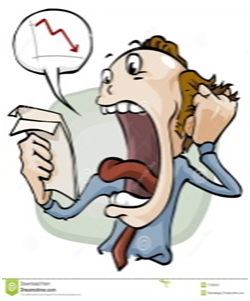
In our Café,
1)let’s say Total Revenue for the year 2022-2023 is Rs, 12,00,000
2)Expenses of salaries, purchases of raw materials, bills is 14,00,000
3)So the the year 2022-2023, Harsh’s café made a loss of (2,00,000)
Inventory (Stock/Goods)
Inventory are goods used in production process, as well as, finished goods produced thereafter.
Inventory also includes good lying with the trading concerns where no production process is carried on.
In Harsh’s Café, the café used raw materials (eg: Vegetables, milk, bakery products) , to produced finished goods Eg: (Pizza, Sandwiches), etc. All these will be considered as Inventory

Goods and Stock
•Goods are the products which are being purchased and sold by the business. Goods and Inventory is often used interchangeably.
•Please note, there are various products which the business purchases in its day to day working. Such items are not categorised as goods, for example in Harsh café, stationary (like bill rolls, pens, stapler) will be purchased. These will not be categorised as goods.
•Inventory are goods used in production process, as well as, finished goods produced thereafter.
•Inventory also includes good lying with the trading concerns where no production process is carried on.
Drawings
No, Not what you are thinking!
These are not doodling or drawing, literally.
When the owner withdraws money or any other asset from business for his “ personal needs” is called Drawings.

In Harsh’s example,
Lets say, after making the business protitable, now he wants to take a vacation with his family to Paris. He withdraws Rs, 5,00,000 from the business Bank Account. These Rs, 5 lacs will be considered drawings in the accounts of the business.
Purchases
•Purchases are expense incurred by the owner on purchase of inventory, on cash or credit.
Note for Students: Don’t think about purchases you would make as an individual
•Think from the company's or proprietor’s viewpoint. It has to be a purchase the business
•In Harsh’s café, if you purchase a burger, it’s a Sale for the business.
•But the purchases made by the café to make that one burger will be a Purchase for the business.
Discount
•Consider this example,
•You are a friend of Harsh and you visit his café to have dinner with your family. You bill comes out to Rs. 2,500.
•Harsh Gives you a discount of 20% and you end up paying only Rs. 2,000.
•Harsh gave you a discount of Rs,500. It is a loss to the business.
•Discount is the reduction on the sale price of the sales.
•In Accounting Discount is of two kinds. Lets discuss this on the next slide
Trade Discount & Discount (Cash Discount
Trade Discount
•This discount is given when a customer places an order in bulk.
•Higher Sales orders are always preferred by sellers and businesses. To encourage that, Trade discount is given to the customer on bulk orders
Cash Discount
•Usually in businesses, Sale/purchase happen on a Credit basis, from buyers and sellers.
•If a customer is willing to make the puchase in Cash, they are given a discount. Because cash is a preferred mode of payment.
•Cash is dear to the business.
Debtors (Credit Sales)
•When a business makes a sale and agrees to the terms of receiving the sales value, at some future date from the customer, the customer becomes debtor of the company.
If a Harsh’s café sells a big order of Rs.10,000 to a customer (Mr. A) who agrees to clear the bill in one month’s time. Mr. A becomes the debtor to the company.
Creditor (Credit Purchases)
•When a business purchases goods from a seller, say Mr. X and agrees to pay Mr. X the money at a future date. Mr. X becomes a creditor to the business.
•It becomes a liability or obligation for the business to pa Mr. X at a future date.
•In our example:
•If Harsh’s café purchases bread on credit from the bakery owner and pay on later date (say end of every month).
•Then the Bakery owner will be accounted as Creditor in the books of harsh’s case Business.
Business Entity
Harsh Opened a Café and named it “Harsh’s Café”. He registered his business are a sole proprietorship (You will learn about this in class 11 business studies).
After he got his form registered, Harsh and Harsh’s café as 2 different persons in the eyes of law.
As soon as the owner registers the business, a new person is born in the eyes of the law, different from its owner.
Transaction
Transaction means an event or activity where one party is a receiver and other is a giver. It can be anything, like paying electricity bills, purchase of raw materials, making sales, etc

Voucher
Voucher is a evidence of the transaction in the court of law. Please look at the sales voucher below:
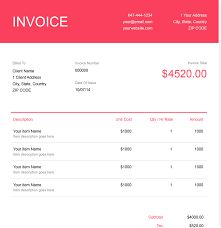
5. Basic terms in Accounting
- Books Name
- Vision classes Accountancy Book
- Publication
- Vision classes
- Course
- CBSE Class 11
- Subject
- Accountancy
BASIC TERMS USED IN ACCOUNTING
Entity
• An entity means an economic unit which performs economic activities e.g., Bajaj Auto, Maruti, TISCO.
Account
• It is a summarized record of
• Relevant transactions at one place
• relating to a particular head. It records not only the amount of transactions.
• But also reflect the direction of the account.
Entry
• A transaction and event when recorded in the books of accounts is known as an Entry.
Transaction
• It is a financial happening entered into by two or more willing parties.
• It effects a change in the asset, liability, or net worth account.
• It is recorded first in journal and then posted into the ledger Examples of a transaction are sale of goods, purchases of goods, receipt from debtors, payment made to creditors, purchase or sale of fixed assets, payment of dividend, etc.
Proprietor
• is the person who makes the investment and bears all the risks and rewards of the business.
Debtor
• A person or firm or company who owes amount to the enterprise on account of credit sale of goods or services.
• The amount due from him is a debt.
• The amount due from a person as per the books of the account is called a book debt.
Drawings
• It is the amount of money or the value of goods which the proprietor or a partner takes for his domestic or personal use.
• Drawing reduces the investment (or capital) of the owners.
• It appears only in the accounts of sole proprietorship firms and partnership firms.
Purchases
• The term purchases are used only for purchases of goods.
• Goods are those items which are purchased for resale or
• for manufacture of products which are also to be sold.
• It includes both cash and credit purchases
Depreciation
• It is a fall in the value of an asset
• Because of usage
• With passage of time
• Obsolescence
• Accident
Purchases Return:
• Goods purchased may be returned due to any reason, say, they are not as per specifications or are defective.
• Goods returned are termed as Purchases Return or Returns Outward.
Sale
• This term is used for the sale of goods dealt by the enterprise.
• The term ‘Sales’ includes both Cash and Credit Sales.
• When goods are sold for cash, they are cash sales
• When goods are sold and payment is to be received at a later date, they are credit sales.
Sales Return or Returns Inwards
• It means Goods sold returned by the purchaser.
Discount
• A reduction in the price of goods is Discount.
Trade Discount
• It is a discount allowed to a customer on the basis of quantity of goods purchased.
Cash Discount
• It is a discount allowed to a customer for making prompt or timely payment.
Capital
• It means the amount (in terms of money or assets having money value)
• Which the proprietor has invested in the business
• can claim from it.
• It is a liability of the business towards the owner.
• It is so because of Business Entity Concept.
• Capital = Assets – Liabilities
Gain
• It is a profit that arises from transactions which are incidental to business such as
• sale of investments or fixed assets
• at more than their book values.
• Gain may be operating gain or non-operating gain.
Cost
• It is the amount of expenditure
• incurred on or
• Attributable to
• A specified article, product or activity.
Creditor
• A person or firm or company to whom the enterprise owes amount on account of Credit purchase of goods or services.
Assets:
• Assets are property or legal rights
• owned by an individual or business
• to which money value can be attached.
• In other words, anything which will enable the firm to get cash or a benefit in the future,
Bad Debt
• It is the amount that has become irrecoverable
• It is a business loss, and
• Thus, is debited to Profit and Loss Account.
Insolvent
• Insolvent is a person or an enterprise which is not in a position to pay its debts.
Liabilities
• Liabilities means the amount
• Which the business owes to outsiders,
• Excepting the proprietors.
• Liabilities can be classified in
(i) Long-Term Liabilities
(ii) Current Liabilities,
• This can be expressed as: Liabilities = Assets – Capital
Goods
• They refer to items forming part of the stock-in-trade of an enterprise,
• Which are purchased or manufactured with a purpose of selling.
• In other words, they refer to the products in which an enterprise is dealing.
Stock or Inventory
• Stock is the tangible property held by an enterprise
• For the purpose of sale in the ordinary course of business or
• For the purpose of using it in the production of goods
• meant for sale or services to be rendered.
• Stock may be opening stock or closing stock.
Profit
• Profit is the surplus of revenues of a business over its costs.
Profit is categorized into:
(i) Gross Profit: Gross Profit is the difference between sales revenue or the proceeds of goods sold and/or services rendered over its direct cost.
(ii) Net Profit: Net Profit is the profit made after allowing for all expenses. In case expenses are more than the revenue; it is Net Loss.
Loss
• Loss is excess of expenses over its related revenues which may arise from normal business activities.
• It decreases the owner’s equity.
• It also refers to money or money’s worth lost (or cost incurred) against which the enterprise receives no benefit, e.g., cash or goods lost in theft.
• It also arises from events of non-recurring nature, e.g., loss on sale of fixed assets.
Expense
• An expense is the amount spent in order to produce and sell the goods and services which produce the revenue.
• Expense is the cost of the use of things or services for the purpose of generating revenue.
• Expense is that part of the expenditure which has been consumed during the current accounting period.
• Examples of expense are payment of salaries, wages, rent, etc.
Expenditure:
• Expenditure is the amount spent or liability incurred for the value received
• Expenditure may be categorized into: (i) Capital Expenditure (ii) Revenue Expenditure
• Expenditure is a payment (or a money sacrifice) for a benefit received.
Capital Expenditure
• It is the amount spent in purchasing assets which will give benefit over more than one accounting period.
• It means expenditure incurred to acquire fixed assets or its improvement.
• Capital expenditure is debited to particular asset account.
• They appear at the assets side of the Balance Sheet.
Revenue Expenditure
• It is the amount spent to purchase goods and services that are consumed during the accounting period.
• It is shown in the debit side of the Profit and Loss Account.
Revenue
• It is the gross inflow of cash, receivables or other consideration.
• arising in the ordinary course of business activities.
• From the sale of goods, rendering of services.
• Use by others of enterprise resources yielding interest, royalties and dividends.
Income:
• Income is the profit earned during an accounting period.
• In other words, the difference between revenue and expense is called income.
• Income = Revenue – Expense

 SS MUKHI
SS MUKHI
